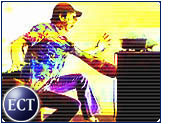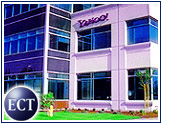
Software maker PeopleSoft (Nasdaq: PSFT), which amid the struggling economy reported earnings of US$50 million for the third quarter of 2001, embraces online marketing as part of its overall advertising strategy.
In a recent interview, chief marketing officer Nanci Caldwell, who came to the company six months ago after 19 years at Hewlett-Packard (NYSE: HWP), told the E-Commerce Times that the Web is an ideal way for PeopleSoft to advertise, since the company’s products are aimed at helping businesses manage their customers and operations online.
At the same time, Caldwell says it is important that Internet ads be a part of a larger campaign that also includes more traditional media.
ECT: What advertising advantages does the Internet offer that other media do not provide?
Caldwell: From a PeopleSoft perspective, the Internet really is a logical extension medium for a company that has the only pure Internet, or Web-based, product on the market. What we continue to do is integrate our traditional channels, print and broadcast, with the interactive power of the Internet.
Our intent is to be not just using [the Internet] as a static mechanism, but really showing how it solves problems and how it works. We’re not looking at online as a static replacement for traditional [advertising].
Never Too Late To Integrate
ECT: What steps, or series of steps, do you take when planning an online advertising campaign?
Caldwell: We look at the target audience that we’re trying to address. We don’t look at planning an online campaign. We look at planning an integrated marketing campaign, and then we evaluate the right channels to be accomplishing that goal. Each channel can play a slightly different role.
ECT: Should an online advertiser choose many sites on which to advertise — or spend the same amount for a larger buy on one site?
Caldwell: I think that it goes back to understanding your audience and your audience analysis, and making sure that you’ve aligned that with the most effective online channels. It depends on whether you’re trying to get reach, impact [or if] you’re trying to drive action. It will depend on what you’re trying to accomplish.
If you’ve got a focused audience, multiple sites are not necessarily the way to go. For more traditional awareness levels, you may find that a mix is the way to go.
What’s New?
ECT: What are the biggest challenges of marketing via interactive media?
Caldwell: The biggest challenge is that it’s still somewhat new, and we don’t understand what’s necessarily going to drive people onto sites, and so we continue to try to build and test and modify. The key point is the measurement. That’s still in its infancy in terms of getting good industry metrics.
ECT: How well suited is the Internet for branding campaigns? For lead generation?
Caldwell: From a branding perspective, we would say that online would not necessarily be the priority for creating brand awareness, but may play a very important role to support brand awareness. We do believe that online is very nice around lead generation and determining interest. And so we tend to use online more in that area than we do for branding.
Link Letter
ECT: What advantages have you gained through running a banner ad campaign?
Caldwell: Banner ad campaigns are fairly good for just general awareness.
ECT: What advantages have you gained through marketing in e-mail newsletters?
Caldwell: We have good success with e-mail newsletters. The recommendation is to make sure that, through good customer relationship management systems, we’re sending the appropriate e-mails to the appropriate audience, with a targeted offer. Have a link in the e-mail that lets the consumer come back to the site. We have had great success in using e-mail that way.
Conservation of Mass
ECT: What are some successful strategies for online advertising?
Caldwell: The people who will be the most successful with online advertising won’t be looking at it as an individual channel, [but instead at] the fundamentals of marketing: a targeted audience, a relevant and targeted offer.
ECT: What pitfalls should an online advertiser try to avoid?
Caldwell: They should avoid using it as a mass medium. I don’t think you should be using online for mass media. You should be using it for much more focused work. I think that you should not be looking at online as the only channel. That would be the same with any marketing channel. The integrated medium is the message.
More Things To Try
ECT: How do you measure the effectiveness of your Internet marketing campaign? What factors come into play?
Caldwell: We measure a campaign — the effectiveness of our campaign throughout — using analytics within our marketing applications. We can look at the return on investment on a campaign and then start to drill down on the different elements of what’s contributing to that.
It’s easier if you take some of the intuitive assumptions with the other channels. With the newness of online, you don’t have that depth of experience. People are experimenting with online in the B2B world; we’re just learning about it. I think that will continue over the next 12 to 18 months. We haven’t tried all the different ways of using online yet.
ECT: Based on your experience with Web marketing thus far, what does the future hold for online advertising — both in terms of strategy and technology trends?
Caldwell: On the tech side, my personal opinion on the online is that we won’t see a tremendous amount of technology advancement. I think what we’ve got now probably won’t change substantially. What the future holds is more experimentation and then starting to come up with more normative data.
















































What does lead generation mean?